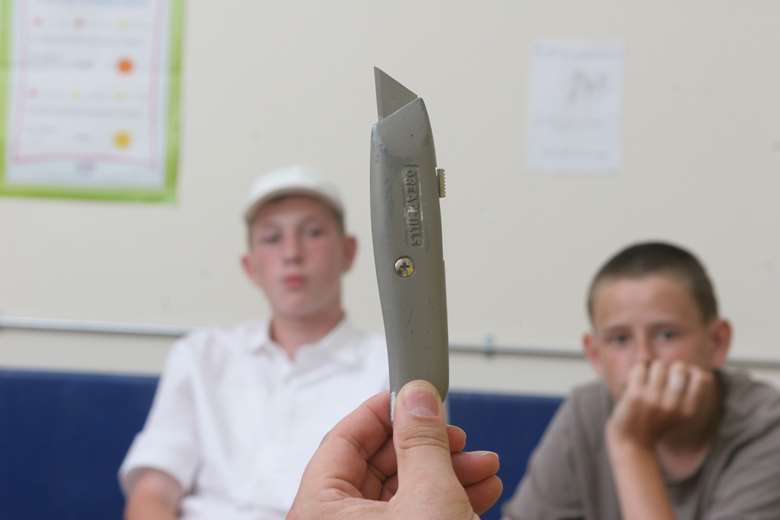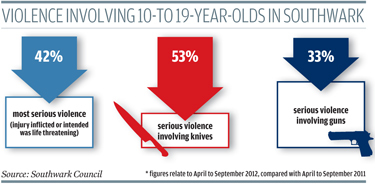How Southwark's multi-agency unit drives down violent youth crime
Jo Stephenson
Tuesday, January 8, 2013
Southwark's multi-agency team has a radical impact in reducing gun and knife crime among young people

Project
Southwark Anti-violence Unit
Purpose
To turn around the lives of young people affected by gang crime and youth violence
Funding
About £100,000 from the Home Office’s Ending Gang and Youth Violence fund, match-funded by Southwark Council in the form of staff costs
Background
In recent years, partners in the south London borough of Southwark have developed a range of schemes to get young people out of gangs and reduce the risks to those caught up in violence. Southwark Council’s head of community safety and enforcement Jonathan Toy explains: “We wanted to bring these key interventions with a good track record together so we were working in a better multi-agency way, understanding the problems together and working on it together.” Cue the creation of a special unit with a range of professionals all in one place.
Action
In May 2012, the Safer Southwark Partnership established the Southwark Anti-violence Unit to support young people and families affected by gang and serious youth violence. The team includes two mentors from the St Giles Trust, two employment advisers from Southwark Works, a youth offending officer, a re-housing specialist, a detached youth worker and a probation worker. They work together at a base in the heart of the borough, and at a number of “touchdown” venues where they can go out and meet young people who are not comfortable or safe coming to that location.
The team receives referrals from a range of sources, including the police, the local community, and increasingly, from gang members they have worked with in the past. “They refer people they think may need help after we have helped them,” explains Toy. The service works mainly with 16- to 25-year-olds and starts by making contact, often visiting young people and their families at home to take them through the options and ways they can help them to “get out”.
Intensive one-to-one help is key to success, explains Toy. Workers typically meet young people three or four times a week and work with them for no less than six months. Supporting young people into work or paid work placements alongside mentoring has proved one of the most effective ways of helping them build a new future. Re-housing can also be important – allowing young people to move away from the area and gang ties so it is easier to make a fresh start.
Outcome
The project is helping young people, including former gang members, out of a life of crime. Since setting up in May 2012, 97 cases have been referred to the unit, according to a report by Southwark Council. They were all young people who had been arrested or convicted for offences in the 12 months prior to the launch of the scheme. But since the start of the project, up until October this year, 57 per cent had not been arrested or convicted for any offences.
Seventy of the 97 have actively engaged with the scheme and project workers. Four have been supported into full-time employment; 19 have undertaken or completed supported work placements; two are doing apprenticeships; 11 are in education and 11 have been supported with emergency housing outside the borough.
The unit, alongside other work, has contributed to a significant reduction in incidents of serious violence among 10- to 19-year-olds between April and September 2012 compared with the same period in 2011. This includes a 42 per cent reduction in the most serious violence (where the injury inflicted or intended was life threatening); a 53 per cent reduction in serious violence involving knives; and a 33 per cent reduction in serious violence involving guns. The partnership also helped achieve a 23 per cent reduction in knife-related admissions to King’s College Hospital emergency department from May 2012 to August 2012, compared with the same period in 2011. The overall cost of violent offences in Southwark – involving young people and adults – was reduced by £1.5m in the first six months of 2012/13 based on the Home Office’s economic cost of crime calculator.

If you think your project is worthy of inclusion, email supporting data to ravi.chandiramani@markallengroup.com




